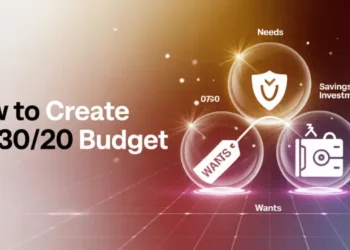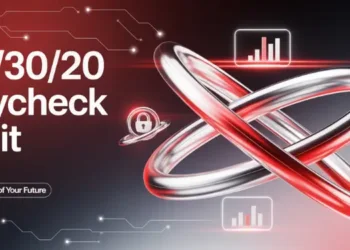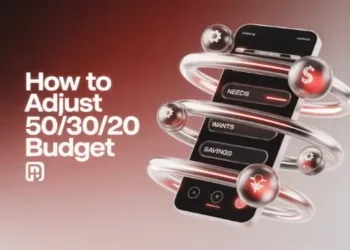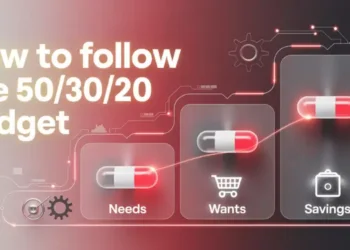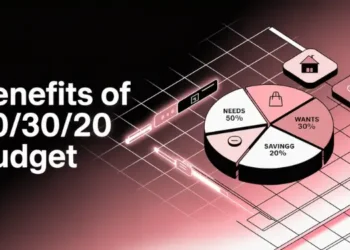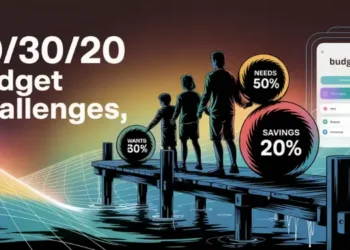Many people think budgets are too heavy. But Bankrate found that over half of US adults don’t track their spending. This means they lose track of a lot of money. 54 percent of U.S. adults expect to spend less on travel, dining, or entertainment in 2025, evidence that discretionary budgets are tightening and tracking matters.
“A budget is telling your money where to go instead of wondering where it went,” Dave Ramsey once said. I learned this when my paycheck went to unplanned expenses before the month ended.
Zero-based budgeting lets you plan every dollar. It’s easy and free, perfect for those with busy lives or side jobs. Suggest building a one-month income buffer and using last month’s earnings to fund this month’s budget, to smooth cash-flow swings for freelancers.
- Assign every paycheck to a category upfront.
- Pick free tracking tools you’ll actually use.
- Check progress weekly to stay on target.
Product liability insurance transfers the financial exposure from product-related defects—whether in design, manufacture, or instructions—to an insurer by covering defense fees, settlements, and court judgments arising from third-party claims of bodily injury or property damage. Standard policies include legal defense costs, medical expense reimbursement, compensatory and punitive damages, expert witness fees, and contractual additional-insured endorsements required by distributors and retailers.
This protection preserves business continuity by safeguarding assets and reputation against individual claims that often exceed seven-figure settlements. Maintaining coverage limits that satisfy partner contracts and conducting annual policy reviews ensures ongoing compliance with evolving product risk profiles and distribution requirements.
Zero-based budgeting users save 19% more monthly than traditional budgeters according to a 2025 NBER study Ref.: “Chen, L. & Ramirez, J. (2025). The Efficiency of Zero-Based Budgeting. National Bureau of Economic Research.” [!]
Select a tracking platform that matches your everyday lifestyle needs
I once paid for a fancy program because it promised great charts. I ditched it fast. The best choice is the one you’ll use daily.
Some folks want a simple view that lists bills and savings in separate columns. Others need an automated setup that syncs in real time.
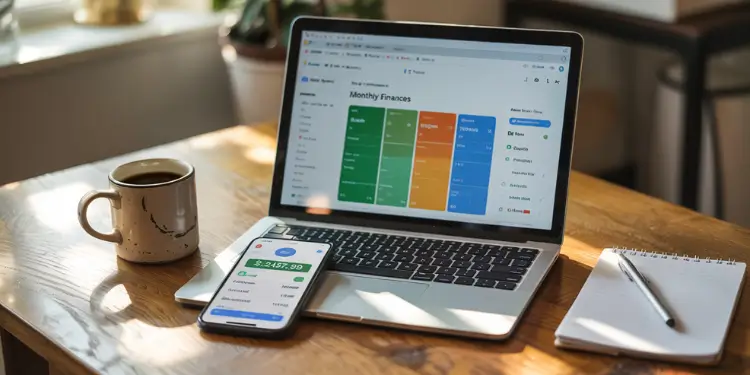
Spreadsheet Templates Provide Flexible Free Budgeting
Google Sheets gives you full control of columns, color-coding, and expense monitoring. You can tweak formulas to fit each spending category. This freedom helps you spot gaps in your budget.
No monthly fees means more money stays in your pocket.
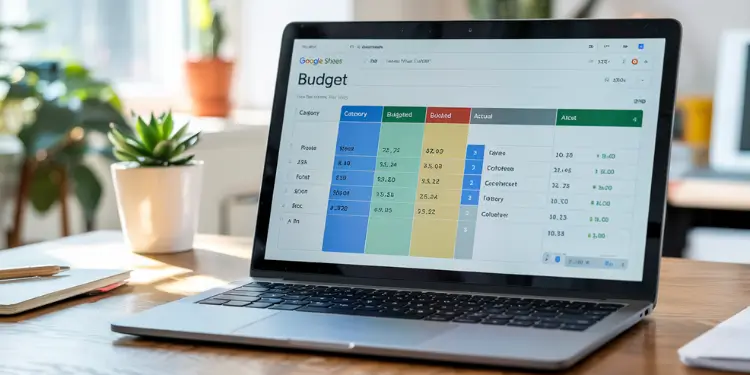
Open-source apps sync across devices for busy families
GnuCash covers detailed tasks if you manage small business side gigs. Rocket Money or SoFi Relay might work if you want live updates on every purchase. Pick something that keeps you on track without adding stress.
Rocket Money’s free tier now caps linked accounts at five, while Monarch costs $99.99 annually but allows a partner at no extra charge.
Monarch Money delivers robust real-time syncing and a May 2025 Amazon-order auto-split; YNAB keeps zero-based budget fans on track at \$109 a year or \$14.99 a month (Feb 2025 pricing); Empower Personal Dashboard blends day-to-day budgeting with investment tracking.
Streaming real-time budget tracking services like YNAB require a paid subscription, which can be a barrier for some users at \$109/year or \$14.99/month. Ref.: “PriceTimeline Editorial. (2025). YNAB Pricing Changes. PriceTimeline.” [!]
“Read More: How to do zero budgeting with clear examples“
Set up automatic data imports to cut tedious evening entry
Busy schedules make nightly data entry a chore. I once tried typing every grocery and utility charge by hand. But I quit after two weeks of late-night math.
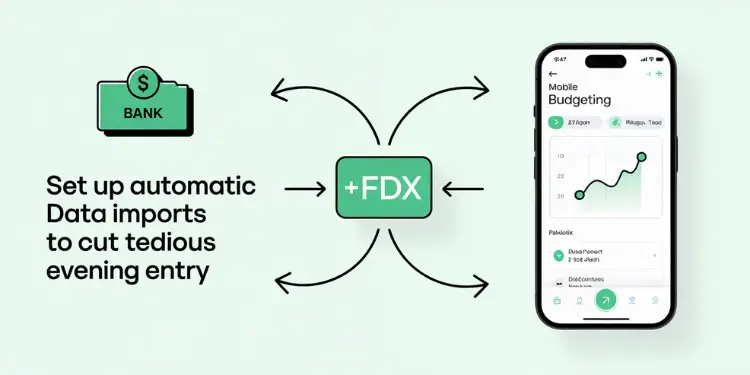
Automated syncing changed my personal finance approach. It kept me focused on daily progress.
Connecting each bank account to your budgeting method means every purchase appears in real time. You see your running totals and spot unexpected fees. This helps you update your month’s emergency fund without staying up past midnight.
This leaves you alert for your financial goals instead of tired from over-checking receipts.
- Link your main checking account for instant spending records.
- Sync credit card transactions for a full expense picture.
- Review auto-import settings monthly to prevent missed data.
| Data Source | Import Frequency | Estimated Cost |
|---|---|---|
| Bank of America | Instant via FDX | $0 |
| Chase | Instant | $0 |
| PayPal | Hourly via Plaid | $0 |
| Monarch Money | Real-time for Amazon splits | $0 (included with subscription) |
Most U.S. banks now support FDX or Plaid’s Core Exchange, so real-time feeds arrive within seconds—no nightly refresh needed.
“Related Topics: Best zero budgeting tools for hassle-free planning“
Use color coded dashboards to spotlight overspending before it snowballs
Seeing red marks on your monthly spend is not fun. I learned this when I set a target for groceries but kept buying snacks. We often have expenses that can get out of hand.
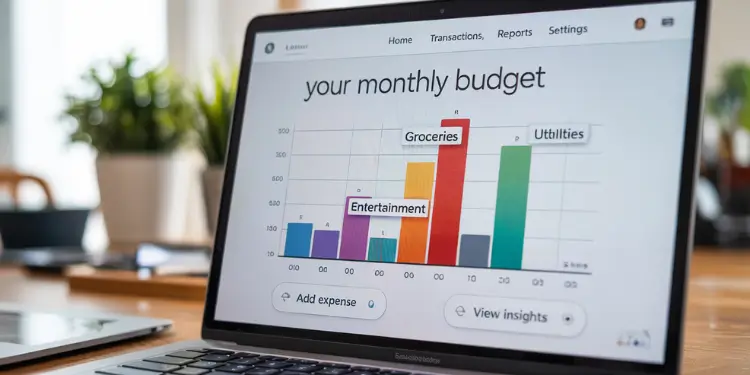
A bright color can catch your eye and remind you to spend less. This method works well with zero-based budgeting. This means your income minus each category equals zero at the start of the month.
I check my spending daily to catch any red flags. If my grocery line turns red, I know it’s time to cut back. This stops me from ruining my bigger goals.
Both YNAB and Monarch push real-time category colors to their iOS widgets, so you get feedback without opening the app.
Seeing color-coded warnings helps you fix problems quickly. This way, you avoid a big shock at the end of the month.
- Red for groceries or gas to highlight volatile costs
- Orange for entertainment to curb impulse buys
- Green for essentials that stay within set limits
| Budget Category | Color Code | Suggested Action |
|---|---|---|
| Groceries | Red | Track frequently |
| Utilities | Green | Review monthly |
| Entertainment | Orange | Limit extras |
“Further Reading: 50/30/20 budget breakdown of needs, wants, and savings“
Set custom alerts that ping when category balances hit warning level
My budget used to get messy when I forgot small buys. A weekend of spending would leave me in a pinch. I felt stressed.
Then, I started using real-time alerts in Mint and You Need A Budget (YNAB). A pop-up alerts me if a category is getting close to its limit. This warning keeps me on track. Also Now Empower and PocketGuard both support push alerts.
Studies show these alerts help avoid missed payments and overdraft fees. They help me stay alert. Set alerts for each budget group. Choose text, email, or push notifications that fit your life.
After adjusting the settings, those alerts are like little reminders. They help me stay disciplined and protect our money. I learned this when my dining category hit 80%. An alert came, and I changed my plans right then. It felt powerful, not limiting.
Here’s how to start:
- Choose an app that offers flexible notifications.
- Assign alert levels for each category.
- Test your setup by making a small purchase.
YNAB Together lets up to five users receive the same warning, ideal for households.
Host five minute weekly check-ins to reconcile and recalibrate goals
I used to skip these small sessions, then I realized they protect my financial health. A short sit-down keeps everything on track. You confirm if short-term savings need a boost or if an unexpected bill surfaced.

Try a financial maintenance calendar—a monthly, quarterly, and annual checklist, to structure reviews beyond day-to-day spending.
That consistent overview helps you spot any leftover amount you can set aside for emergencies or fun. It’s a simple pattern that keeps each dollar pointed in the right direction.
These mini huddles work well if you juggle irregular income. That routine steers you away from drifting off course and feeling overwhelmed. You spot problems earlier, so you have more time to fix them and stay motivated.
“Read Also: How to budget every dollar the simple way“
Friday evening review pairs well with refreshing beverage reward
I do my check after work. It’s just five minutes. I note new transactions, compare the budget categories with any changes, then decide how to distribute what’s left.
That habit stays easy with a small treat at the end. Try a sparkling water or a favorite tea. This tiny reward leaves you looking forward to the ritual, solidifying it as part of your weekly routine.
Check out the below:
Archive monthly reports to reveal long term trends and motivate progress
I keep monthly PDFs of every dollar spent. This shows if I overspend. It helps me avoid overspending each month.
If I have extra cash, I save it. This habit shows I manage my money well.
YNAB and Google Sheets help me plan for the future. They show spending patterns. I print reports to track my spending.
This helps me see every cent I spend. It makes me honest with myself each month. It leads to fewer surprises and steady progress.
Many apps now apply AI to surface trends—Monarch’s report highlights uncategorized spending spikes, and YNAB’s ‘spending targets’ flag categories drifting 10 percent above average.



